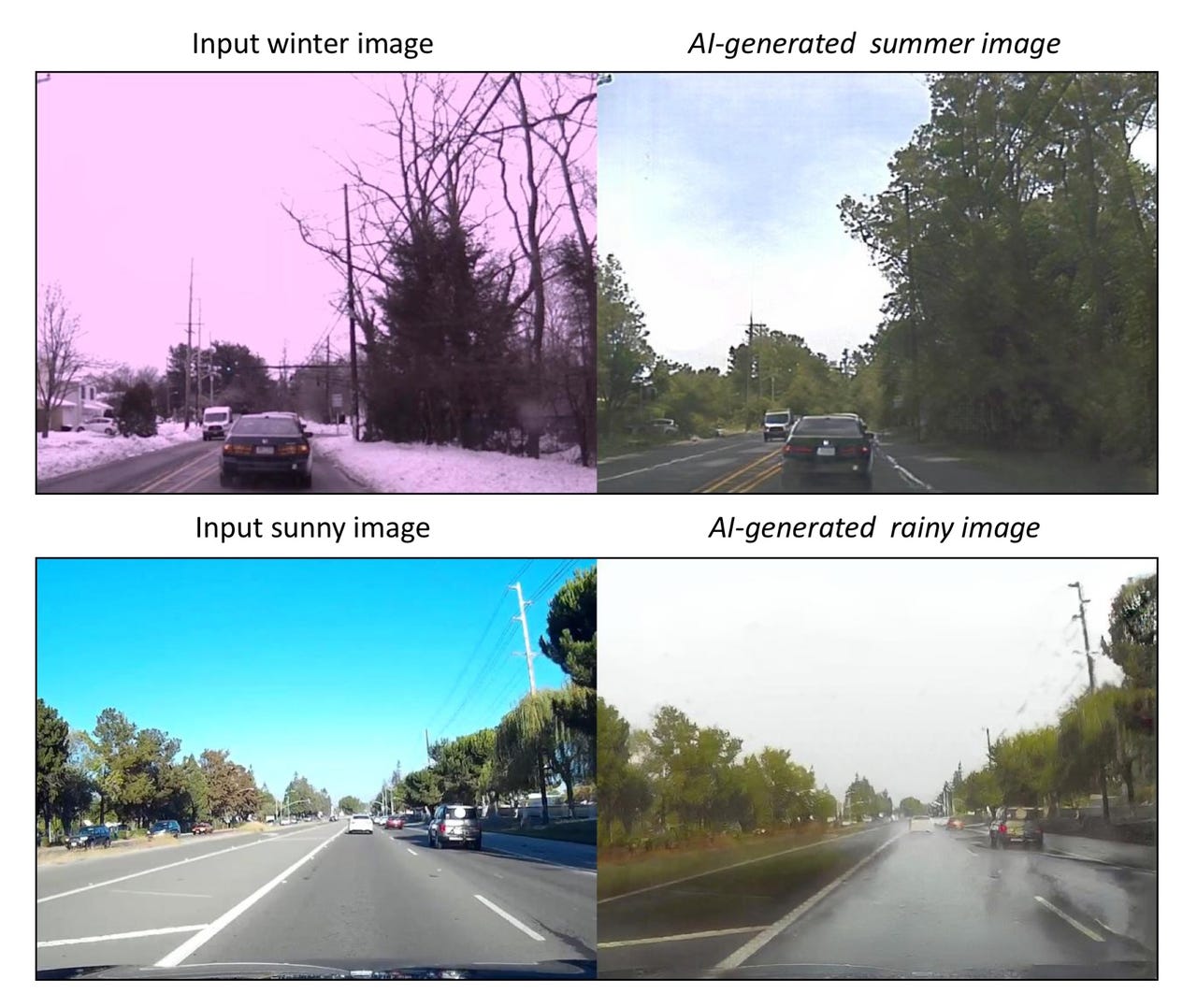Nvidia looks to reduce AI training material through 'imagination'


Nvidia researchers have used a pair of generative adversarial networks (GANs) along with some unsupervised learning to create an image-to-image translation network that could allow for artificial intelligence (AI) training times to be reduced.
In a blog post, the company explained how its GANs are trained on different data sets, but share a "latent space assumption" that allows for the generation of images by passing the image representation from one GAN to the next.
"The use of GANs isn't novel in unsupervised learning, but the Nvidia research produced results -- with shadows peeking through thick foliage under partly cloudy skies -- far ahead of anything seen before," the company said.
The benefits of this work could allow for network training to require less labelled data, it said.
"For self-driving cars alone, training data could be captured once and then simulated across a variety of virtual conditions: Sunny, cloudy, snowy, rainy, nighttime, etc," Nvidia said.
Nvidia showed how a picture taken in winter could be "imagined" as a summer's day, and how an image of a house cat could be used to generate images of lions, tigers, and cougars.
Far from a GPU company focused solely on gaming, Nvidia has been attempting to push its hardware into edge devices and using artificial intelligence as the vehicle for it.
Last week, the company announced that it had struck a deal with GE Healthcare to update 500,000 medical imaging devices deployed across the globe with Revolution Frontier CT, which will allow for better imaging at hospitals.
GE said the speedier Revolution Frontier would be better at liver lesion detection and kidney lesion characterisation, and has the potential to reduce the number of follow-up appointments and the number of non-interpretable scans.
For its third quarter, Nvidia posted record quarterly revenue of $2.64 billion, of which its datacentre segment nearly doubled the $240 million in sales posted at the same time last year, to report $501 million in revenue.
Related Coverage
Nvidia, Nuance team up to bring AI, machine learning to radiologists
The partnership highlights how multiple vendors in the medical foodchain see machine learning and artificial intelligence as a way to revamp medical imaging.
Nvidia expands new GPU cloud to HPC applications
With more than 500 high-performance computing applications that incorporate GPU acceleration, Nvidia is aiming to make them easier to access.
Nvidia's data center business hits $2 billion annual revenue run rate
The Volta ramp is just starting and deep learning and artificial intelligence with a dose of high-performance compute is driving some serious growth for Nvidia.
Video: NVIDIA's Pegasus AI chip could autonomous vehicles (TechRepublic)
NVIDIA's new Pegasus chip promises to deliver self-driving taxies by 2018. TechRepublic's Alison DeNisco details the new platform, and why self-driving cars could arrive sooner than expected.
Nvidia aims for level 5 vehicle autonomy with Pegasus
The chip maker has touted its latest Drive PX platform as being able to hit level 5 autonomy.